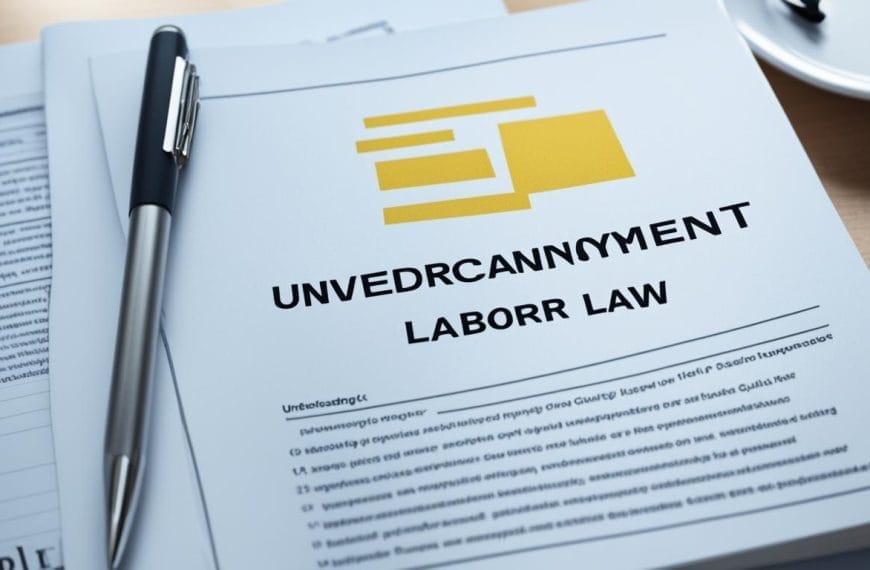Unemployment insurance provides temporary financial assistance to workers who lose their jobs through no fault of their own. Understanding how the program works is crucial if you find yourself unemployed and in need of benefits. This comprehensive guide covers everything you need to know, from eligibility requirements to receiving payments.
What is Unemployment Insurance?
Unemployment insurance (UI) is a state-operated program designed to provide temporary payments to qualified workers who are unemployed through no fault of their own. Each state sets its own rules for eligibility, benefit amounts, filing procedures, and more.
UI benefits help cushion the financial stress of being laid off while giving workers time to find a suitable new job. The program is funded by state and federal payroll taxes paid by employers. Employees do not directly fund UI through deductions from paychecks.
Am I Eligible for Unemployment Benefits?
To receive unemployment insurance benefits, you must meet all eligibility requirements set by your state. Common requirements include:
- Recent earnings: You must have earned sufficient wages during a defined “base period” before losing your job. Each state sets minimum earnings thresholds.
- Employment status: You can’t have voluntarily quit your job without good cause. Getting laid off from your job generally makes you eligible.
- Availability: You must be ready, willing, and able to work. Active job searching is generally required while receiving benefits.
- Work authorization: You must have valid work authorization and permission to work in the United States.
Other eligibility factors also come into play, such as the reason you lost your previous job. Contact your state unemployment agency for specifics on qualifying in your area.
How Do I Apply for Benefits?
Filing an unemployment claim involves a few simple steps. Make sure you have the required information handy before getting started:
- Personal information: This includes your name, address, Social Security number, driver’s license number, phone number, birthdate, and email address.
- Employment history: Have your former employer’s name, address, phone number, and dates of employment available.
- Bank account info: You’ll need your bank name, routing number, and account number to set up direct deposit for benefits.
Then, apply as soon as possible after losing your job:
- Online: Visit your state unemployment office website and look for the link to file a claim. State sites allow claims applications 24/7.
- By phone: You can call your state’s claims processing line. Speak to a representative to apply over the phone.
- In person: Visit a state unemployment office near you to fill out an application in person. Bring required documentation.
Follow all instructions carefully as you complete the application. Mistakes could cause delays in getting approved.
How are Benefit Amounts Calculated?
Unemployment insurance aims to partially replace lost income by providing a percentage of your average weekly wages over a base earnings period. This base period is typically the earliest four of the five completed calendar quarters before you filed your claim. For example, if you filed in August 2023, your base period would be April 2022 through March 2023.
To determine your weekly benefit amount (WBA), states look at your total wages during the base period. Different formulas are used, but the WBA is typically around 40-50% of average weekly earnings during that time. Maximum and minimum amounts apply.
Benefits are taxable income. You can opt to have taxes withheld when certifying eligibility each week.
What Other Unemployment Programs Exist?
In addition to regular unemployment insurance, some states offer extended benefits when economic conditions trigger high unemployment. There are also programs like:
- Disaster Unemployment Assistance (DUA): Provides benefits to those impacted by disaster events.
- Pandemic Emergency Unemployment Compensation (PEUC): Provides additional weeks of benefits during national emergencies like COVID-19.
- Trade Adjustment Assistance (TAA): Offers assistance including job training to workers who lose jobs due to foreign trade.
Check with your state unemployment office to learn about additional programs available in your area.
Tips for Applying for Unemployment
Here are some top tips for successfully applying for and receiving unemployment benefits:
- File as soon as possible: Get your claim in immediately after becoming unemployed to avoid delays.
- Complete all questions: Don’t leave any parts of the application blank, as incomplete information can hold up processing.
- Know your dates of employment: Have accurate hire and termination dates handy for all employers over the last 18 months.
- Follow up on the status: Contact the unemployment office if you don’t receive an approval decision within two weeks.
- Continue job hunting: Look for work and be ready to provide your job search details. Actively looking for work is generally required.
- Report any issues: Notify the unemployment agency immediately if you find a new job, start earning income, relocate, or encounter any other change in status.
- Don’t hesitate to appeal: You can appeal a denial decision or insufficient benefit amount if you believe an error occurred.
Understanding the unemployment insurance process from start to finish makes it far easier to obtain the temporary financial assistance you may need during periods of unemployment. Be sure to follow your state’s specific guidelines for qualifying, filing a claim, maintaining eligibility, and receiving benefits.













